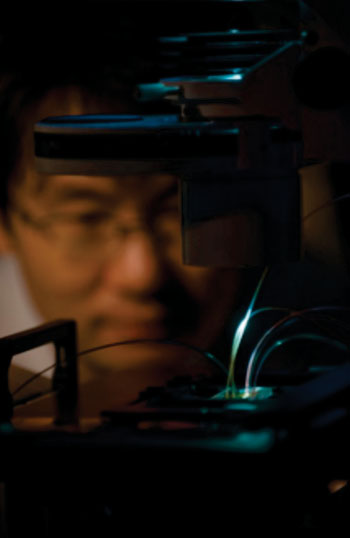DNA-Based Droplet System Rapidly Detects Bacterial Infection in the Bloodstream
By LabMedica International staff writers
Posted on 24 Nov 2014
A new test for bacterial infection in the bloodstream is based on an innovative DNA labeling and particle counting system.Posted on 24 Nov 2014
Investigators at the University of California, Irvine (USA) recently described a new technology termed "Integrated Comprehensive Droplet Digital Detection" (IC 3D) that can selectively detect bacteria directly from milliliters of diluted blood. IC 3D is a one-step, culture- and amplification-free process that provides results with single-cell level sensitivity in from ninety minutes to four hours.

Image: IC 3D technology rapidly detects bacterial infection in blood samples (Photo courtesy of University of California, Irvine).
The IC 3D instrument converts blood samples into billions of minute droplets. Fluorescent DNA sensor solution infused into the droplets detects those with bacterial markers, marking them with an intense fluorescent signal. Separating the samples using real-time, DNAzyme-based sensors, droplet microencapsulation, and a high-throughput 3D particle counter system minimizes the interference of other components in blood, making it possible to directly detect target bacteria without the purification typically required in conventional assays.
Using Escherichia coli as a target, the investigators demonstrated that the IC 3D system could provide absolute quantification of both stock and clinical isolates of E. coli in spiked blood within a broad range of extremely low concentration from one to 10,000 bacteria per milliliter with exceptional robustness and limit of detection in the single digit range.
“We are extremely excited about this technology because it addresses a long-standing unmet medical need in the field,” said senior author Dr. Weian Zhao, assistant professor of pharmaceutical sciences at the University of California, Irvine. “As a platform technology, it may have many applications in detecting extremely low-abundance biomarkers in other areas, such as cancers, HIV and, most notably, Ebola.”
The study was published in the November 13, 2014, online edition of the journal Nature Communications.
Related Links:
University of California, Irvine













.jpg)